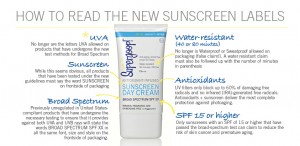FDA Changes for Sunscreen Labels
The United States Food and Drug Administration has announced significant changes to sunscreen product labels that will help consumers decide how to buy and use sunscreen, and allow them to protect themselves and their families from sun-induced damage more effectively.
How sunscreen works. Most sun protection products work by absorbing, reflecting, or scattering sunlight. They contain chemicals that interact with the skin to protect it from UV rays. All products do not have the same ingredients; if your skin reacts badly to one product, try another one or call a doctor.
SPF. Sunscreens are assigned a sun protection factor (SPF) number that rates their effectiveness in blocking UV rays. Higher numbers indicate more protection. You should use a sunscreen with at least SPF 15.
Reapplication. Sunscreen wears off. Put it on again if you stay out in the sun for more than two hours, and after you swim or do things that make you sweat.
Expiration date. Check the sunscreen’s expiration date. Sunscreen without an expiration date has a shelf life of no more than three years, but its shelf life is shorter if it has been exposed to high temperatures.
Cosmetics. Some make-up and lip balms contain some of the same chemicals used in sunscreens. If they do not have at least SPF 15, don’t use them by themselves.
Avoid Indoor Tanning
Using a tanning bed, booth, or sunlamp to get tan is called “indoor tanning.” Indoor tanning has been linked with skin cancers including melanoma (the deadliest type of skin cancer), squamous cell carcinoma, and cancers of the eye (ocular melanoma).
Source: CDC & FDA

